[Curious representation of the god Neptune]
Like many other important archaeological sites that are located throughout the length and breadth of the Iberian Peninsula, the archaeological site of Carranque shows us that History, as Schliemann showed until finding the remains of the Troy described by Homer in the Iliad, it can be comparable to the different layers of an onion.
[Through the site towards the Casa de Materno]
For your information, I will tell you that Carranque is a town that, although it is located in the vicinity of Madrid, belongs to the territorial jurisdiction of that 'capital of forgotten empires', as the German writer and poet, Rainer María Rilke, author, defined Toledo , among other works, of two important anti-war allegations, also brought to the big movie screens: 'No novelty on the front' and 'Time to love, time to die'.
[Remains of the Paleo-Christian basilica]
Entering archaeological remains, which to a greater or lesser degree of conservation have survived to this day, also means having the courage to swim in turbulent waters, whose currents, metaphorically speaking, can make us shipwrecked in the unexpected whirlwinds of times, which as we will see, they were not as barbarous as history has shown us on numerous occasions.
[View of the basilica and added buildings]
For this reason, I would like to invite you to allow yourself to be seduced by your imagination and try to place you in that fourth century after Christ, when architecture in Spain had unapologetically adopted Roman genius, such as the semicircular arch and the architects of the time, without undoubtedly influenced by their genius, they followed without blinking the teachings contained in the architectural treatises of Vitruvius.
[A modern structure protects the Maternal House]
Some treatises, which until relatively modern times, were part of the subjects that all enrolled students and aspiring students one day had to study and assimilate.
[The ever-present Mythology]
The masterpiece of this site and we enter with it in the matter, is the so-called Maternal House, in the vision of whose conception, little or nothing takes into account the appreciations of another theorist of Architecture, John Ruskin - remember his treatise 'The seven lamps of Architecture', converted, according to some, into the Bible of the pre-Raphaelite movement - when it insisted, fervently, that in it, that is, in Architecture, was the beginning of the Arts.
[The death of Adonis]
Materno Cinegio, to whom the construction of the house that bears his name is attributed, I will tell you that he was the uncle of Emperor Theodosius I, father of the famous Gala Placidia, whose mausoleum, a true work of art, is located in the Roman town of Ravenna.
[Supports where the columns of the heating system known as hypocaust went]
The house built by Materno in Carranque, was large, calculating that originally it occupied an area of approximately 1,600 square meters, which was accessed by a porch supported by brick columns, next to which they were located, as it used to be custom in Roman villas of some relevance, two square towers.
[General overview of the different rooms]
Like any Roman villa of its characteristics, it had numerous rooms, whose walls are supposed to have been decorated with a profusion of frescoes, which would allude, as shown in the rich mosaics on the floors, to different scenes and themes from Mythology, highlighting three of them, which are, possibly, the ones that have reached us in the best conditions.
[Floral and geometric symbols]
These were none other than the so-called Maternal cubicle or room, the ‘oecus’ or large reception room, which had a beautiful hexagonal shape and a rectangular room, called ‘Triclinium’, equipped with an exedra on a dais.
[Partial view of the hall]
The house also had all the comforts, since the heating system that the Romans called 'hypocaust' was also used, which basically consisted of an outdoor oven where the air that passed under a floor supported by pilasters and that was distributed by ceramic tubes, similar to chimneys, also having running water and drainage.
[Another perspective of the different rooms]
Regarding the latter, it is convenient to know that the pipes discovered in this place were made of lead, a system that, as you know, continued to be used throughout the centuries and even today, if we had access to many buildings in the old neighborhoods. In many western cities, we would see that it continues to be used, despite having been superseded many years ago by the advantage - certainly not for the environment - of PVC plastic.
[Originally, the center was occupied by a small fountain]
Spectacular, on the other hand, are the mosaics, which represent various mythological scenes, among which a curious god Neptune stands out, endowed with mysterious horns, superbly and handcrafted, piece by piece, where it is known, that as it is done nowadays, also at that time the artisans left their name, being in this case, by having discovered an inscription that confirms it, work of the workshop of a certain Máximo or Maximino, being Hirinio the name of the artist who made the paintings; In addition to the spectacular mosaic of Neptune, it is also worth highlighting, due to its significance and beauty, that one that represents the death of Adonis.
[Geometric interlocking that continued to be used in numerous later Romanesque constructions]
To end this visit, comment, in relation to the comparison of an onion, by its different layers, that we did at the beginning of history, that next to the monumental town of Materno, the remains of different buildings and cultures have been found, like an early Christian basilica, a nymphaeum and different ceramic remains, of unmistakable Muslim origin.
[Partial view of the site and the modern structure that protects the House of Materno]
NOTICE: Both the text and the accompanying photographs are my exclusive intellectual property and therefore are subject to my Copyright.
[Modern recreation of how the Maternal House must have been]
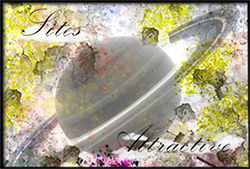
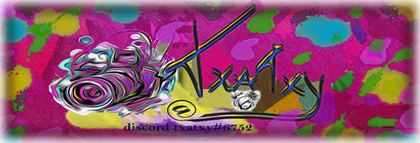

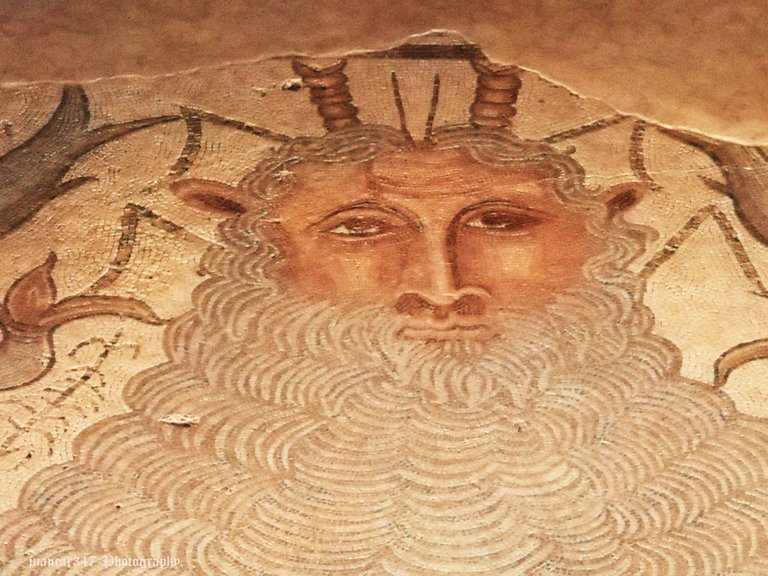

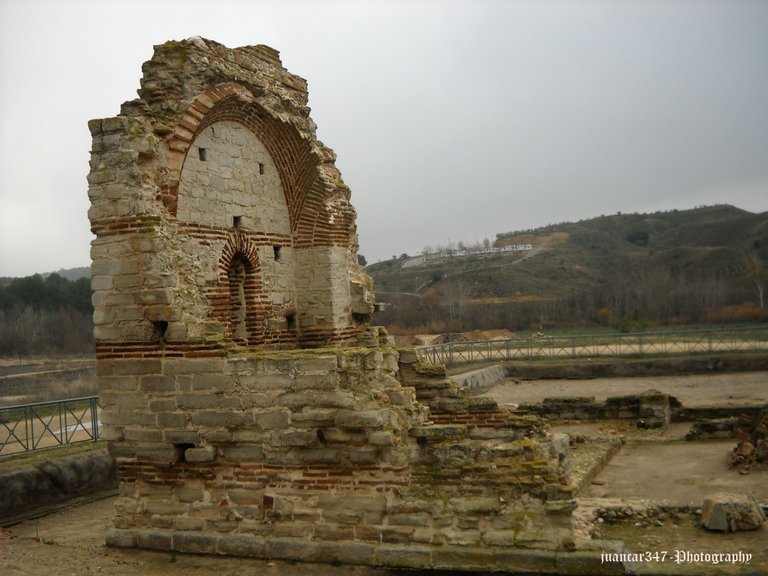
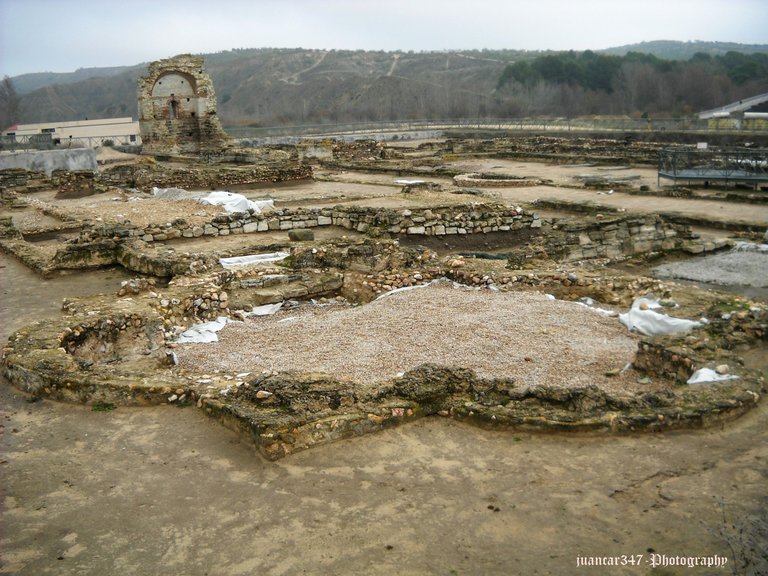
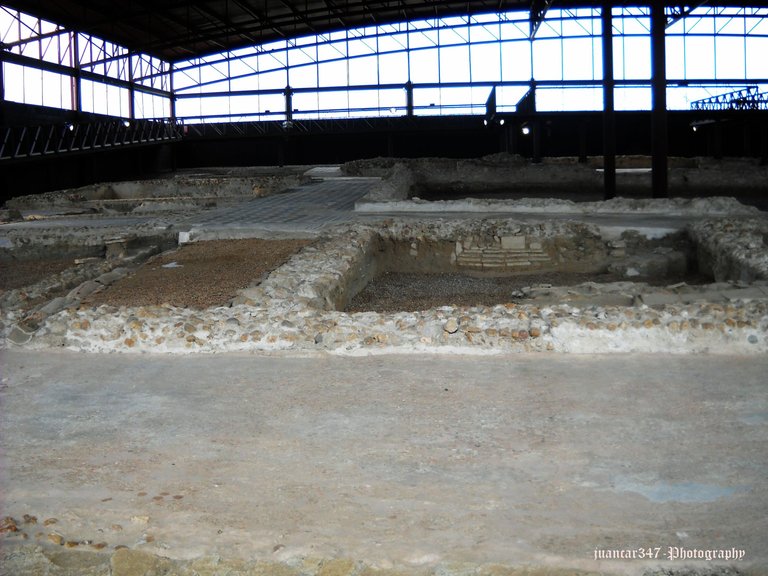
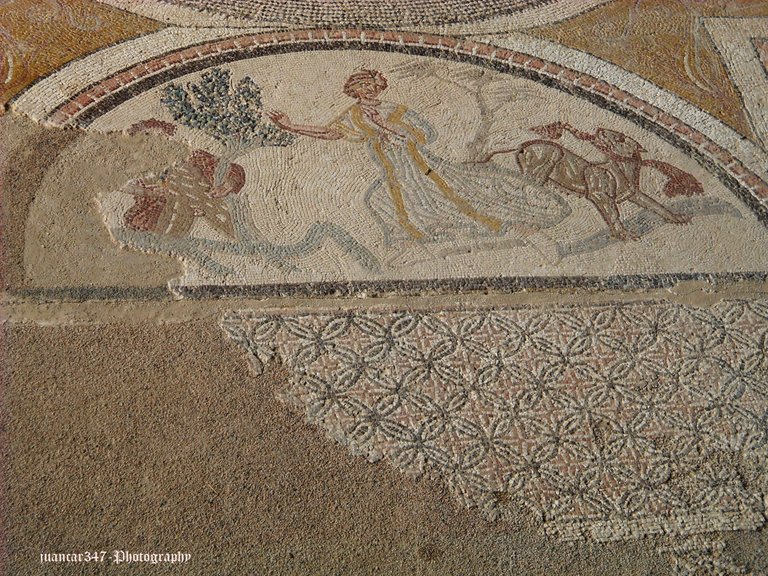
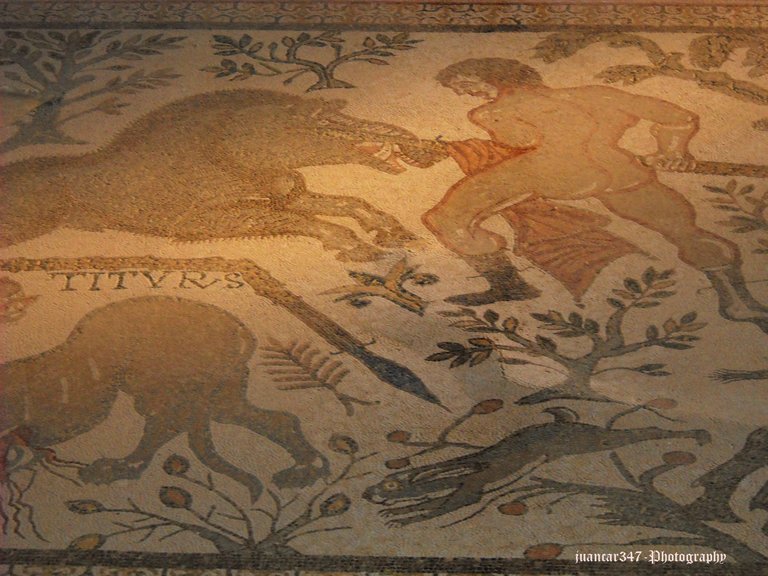
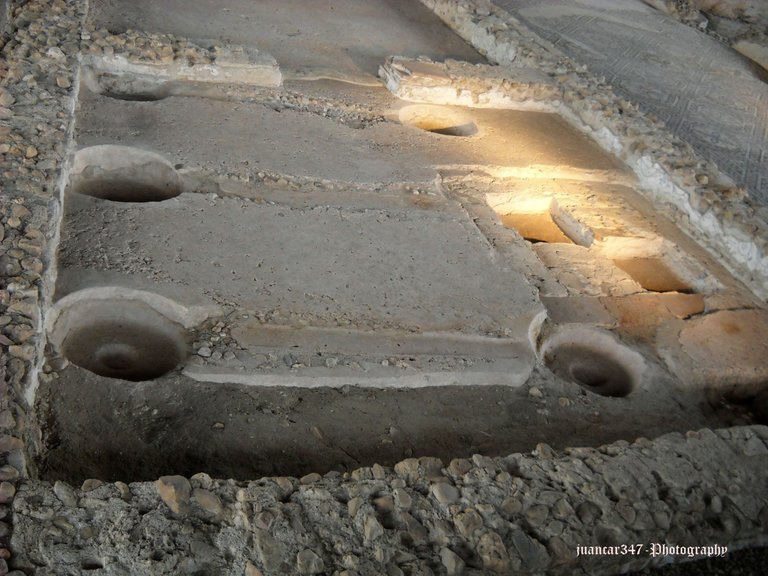
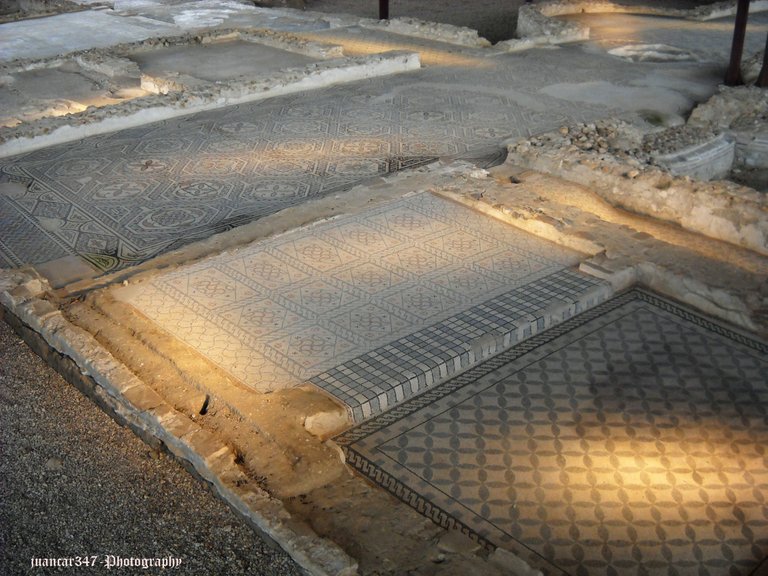
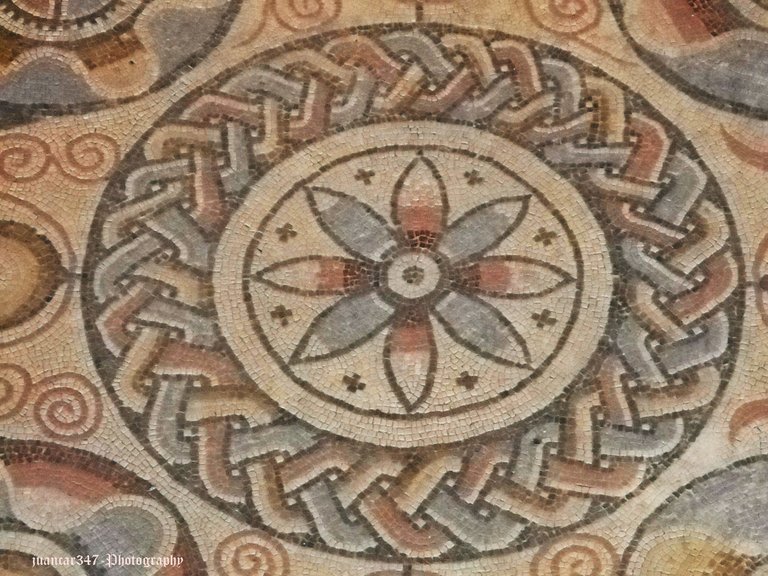
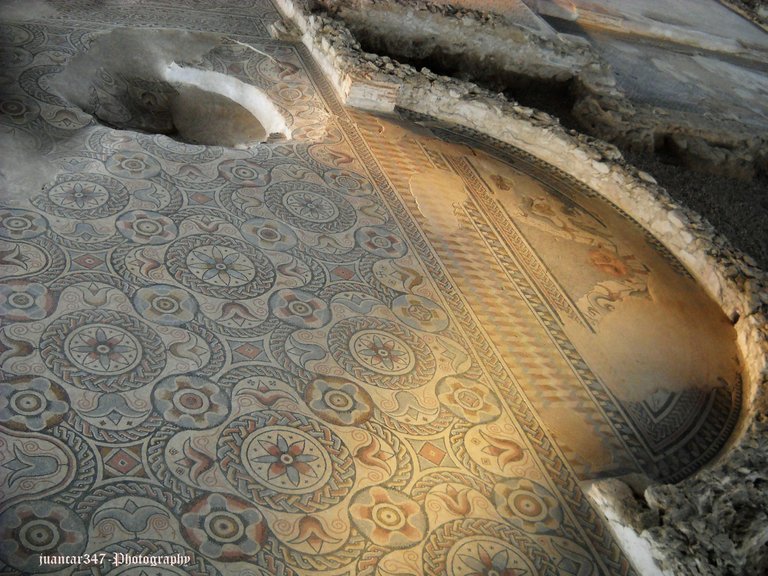
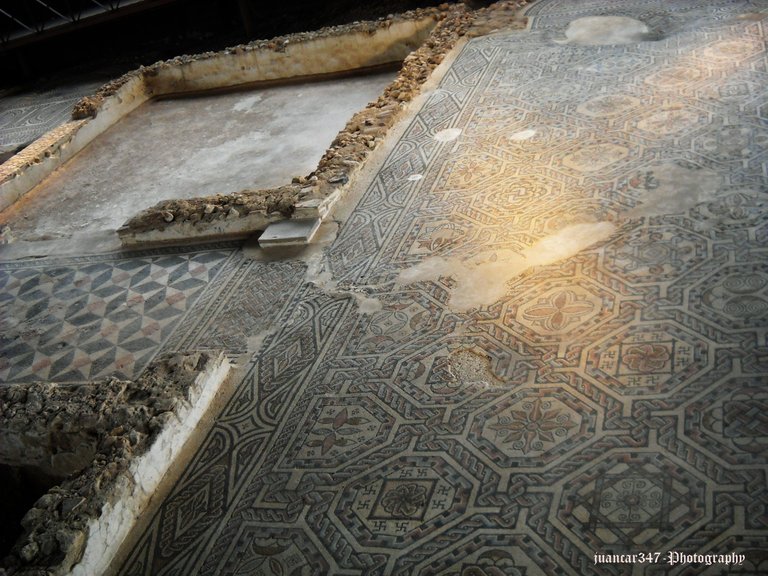
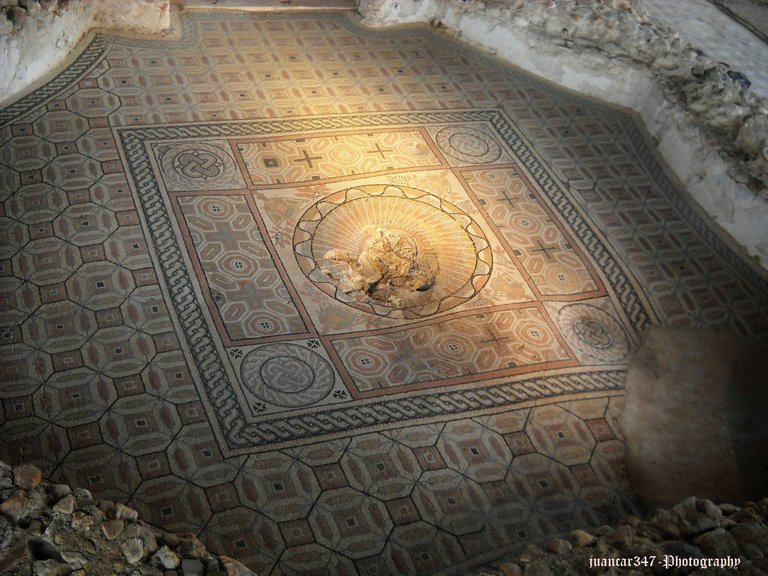

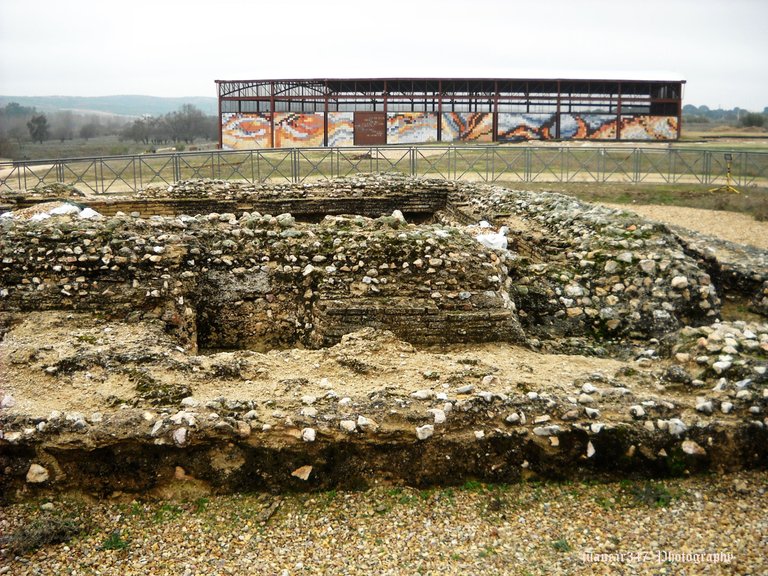


Absolutely amazing and such detail for such old historic art. Its wonderful that they have stood the test of time and still grace us with their presence. It shows the value of art throughout human history.
I wonder if people complained back then about money and resources being spent on art as it does cause some issues still today.
Thank you for sharing.
As they say, there have always been classes. In that sense, the luxury and magnificence of this villa were a consequence of the social position of its tenant, rich enough to afford it. On the other hand, it is true that the world of Art moves incredible resources, which could well be used for other more urgent needs. In Spain, the looting of its great archaeological sites and the departure of authentic works of art have been famous, due to their lack of culture and interest. Good examples of this are the incredible paintings of San Baudelio de Berlanga or those of the Romanesque church of Fuentidueña, which are currently exhibited in The Cloisters, in New York. Or the purchase of the press magnate, Randolph Hearts, of the Cistercian monastery of Óvila, transferred stone by stone to the United States. In reality, the world's social pyramid has barely changed over time. Thank you for your comment and a warm greeting.
Wow super amazing 🥰
Thank-you very much, friend
Yeah man
That are intricate pieces of history. By the way what era or period was that mosaic floors or wall?
These friezes, which belong to the Maternal House, are dated to the 4th century after Christ, as well as the remains of the paleo-Christian basilica. Later, there are other ruins of a Visigothic character and remains of Muslim ceramics. The latter would correspond, at the very least, to the 7th-8th centuries, shortly after the invasion of the Iberian Peninsula.
That is why I can see some Muslim and Cristian patterns from the mosaic. Thank you for sharing. !PIZZA
@juancar347! I sent you a slice of $PIZZA on behalf of @juecoree.
Learn more about $PIZZA Token at hive.pizza (3/10)
Thank-you very much
Well, you also have to consider the oriental imports that the Romans brought. Even many of these patterns, such as hexapetal flowers, were part of funeral rites and are found in numerous graves, not only Roman but also Celtiberian and even Christian, which were also adapted to the art of so-called Romanesque churches. Thank you very much and best regards.
Is a architecture very amazing AND good for the history
Thank you very much for your comment, with which I fully agree. I think that the architecture of bygone eras still has many things to show us and with which to surprise us. Greetings
Carranque is definitely an excellent treat for history buffs on Roman architecture. Just like peeling off the layers of an onion, that remarkable archaeological site lets you uncover how their building technologies, despite being primitive, were ahead of their time and served their purpose well. The spectacular work of mosaic tiles alone was an obvious testament to that. With limitations on their hand tools, I'm just amazed at how near-perfect the design details were executed. Thank you for this interesting tour back in time!
I fully agree with your statement. In fact, even those ruins, which belong to different styles that coexisted together at some point in history, seem flat on the surface of the ground, which somehow also help us to understand their monumentality. For this reason, and I answer the other part of his argument, it is also very difficult for me to understand how they reached such perfection, taking into account the rudimentary tools at their disposal. Which, in my view, makes studying him even more fascinating. Thank you very much for his comment and a warm greeting.
Estoy totalmente de acuerdo con su afirmación. De hecho, incluso esas ruinas, que pertenecen a diferentes estilos que convivieron juntos en algún momento de la Historia, parecen planos sobre la superficie del suelo, que de alguna manera también nos ayudan a comprender su monumentalidad. Por eso, y contesto a la otra parte de su argumento, a mí también me cuesta muchisimo entender cómo llegaron a alcanzar tal perfección, teniendo en cuenta la rudimentario de las herramientas de que disponían. Lo que, bajo mi punto de vista, hace que su estudio resulte incluso más fascinante. Muchas gracias por su comentario y un cordial saludo.
Indeed, the Roman civilization definitely has us baffled especially with their ancient architecture. Their building technology may be old but we surely have learned a lot from them.
Totally agree with you.
Well done @juancar347! We're happy to inform you that this publication was specially curated and awarded RUNNER-UP in Architecture Brew #29. Congratulations!
Subscribe to Architecture+Design, an OCD incubated community.
Thank-you very much
You’re most welcome @juancar347, cheers!
Hello @ juancar347 I greet you with respect from Venezuela. Your publication is really very interesting. Thank you for showing us such an important historical review. I congratulate you Excellent photographs. I liked this post. God bless you always and take care of you. Receive a strong hug full of light and positive energy.
Thank you very much for your kind comment, friend @marcosmilano71. I sincerely believe that despite its dilapidated state, it is a place that is worth getting to know and from which many conclusions can be learned and drawn. An affectionate greeting.
Muchas gracias por tu amable comentario, amigo @marcosmilano71. Creo, sinceramente, que a pesar de su estado ruinoso, es un lugar que merece la pena conocerse y del que se pueden aprender y sacar muchas conclusiones. Un afectuoso saludo.
Hello how beautiful and well preserved it looks
A fabulous house with all the luxuries that we have today and that art of mosaics, how they combine stones or pieces of ceramic to make those works of art.
Today we would call it crafts and put them in a museum.
I would live happily there is heat haha is what I like the most and then the heaters say it is new technology haha
Happy saturday juankar
It's true: we have a lot to learn from the past and even if some may not believe it, we have been using its techniques for millennia. I imagined the work, craftsman, as you say, that those tilers had to do: thousands and thousands of pieces that had to fit perfectly like a puzzle. The heating and drainage systems, which have survived to this day and which made the places real homes. Anyway, I think that sometimes we have to put aside our arrogance and look at the past with very different eyes. Happy Saturday
Es cierto: tenemos mucho que aprender del pasado y aunque haya quien no lo crea, hemos estado utilizando sus técnicas durante milenios. Imaginaté el trabajo, artesano, como dices, que tenían que realizar aquéllos soladores: miles y miles de piezas que tenían que encajar perfectamente como un puzzle. Los sistemas de calefacción y desagüe, que han sobrevivido a nuestros días y que hacían de los lugares verdaderos hogares. En fin, creo que a veces hay que dejar de lado nuestra soberbia y mirar al pasado con ojos muy diferentes. Feliz sábado
Thank-you very much